Review: Top CZ Stories of 2006
Posted by: Loren Coleman on March 11th, 2007
With the holidays, some people missed these…
The Top Ten Cryptozoology Stories of 2006
by Loren Coleman, Cryptozoology A to Z
1. Darlings of Cryptozoology Videotaped: Coelacanth and Giant Squid
2. Lost Worlds Revealed
3. New European Mammal and Others Discovered
4. Discoveries Debated: Ivory-billed Woodpecker and Kouprey
5. Africa Explored: Mokele-mbembe Quest, Gambia Expedition, and SEALs’ Secret Mission
6. Lake Monsters Photographed: Champ and Nahuelito
7. Canid Capered: Maine Mutant, Montana Creature, and Nebraska Cryptid
8. Cryptids Televised: Mothman, Monsters, and More
9. Thylacine Remembered: Steve Irwin’s Search, New Photo, and National Thylacine Day
10. Cryptozoology and Art Exhibited: A First
^^^^^^^^^^^^^^^^^^^^^^^
1. Darlings of Cryptozoology Videotaped: Coelacanth and Giant Squid
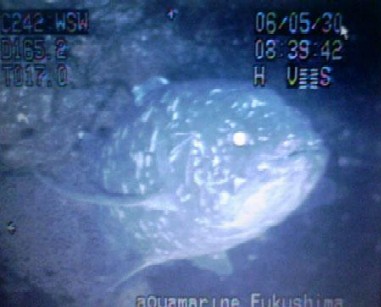
The "darlings of cryptozoology" are those new species that have become the success stories of cryptid discoveries – from the mountain gorilla to the okapi, from the pygmy hippo to the megamounth shark. In 2006, big news was made with the live filming of two such species – the Indonesian coelacanth and the giant squid.
The 1998 newly-discovered Indonesian coelacanth (Latimeria menadoensis) was filmed alive at the depth of 170 m, 17, at 8:30 am on May 30, 2006, off shore Buol, about 350 km west from Manado, Sulawesi Island, with a ROV operated by the Aquamarine Fukushima Survey team. More.
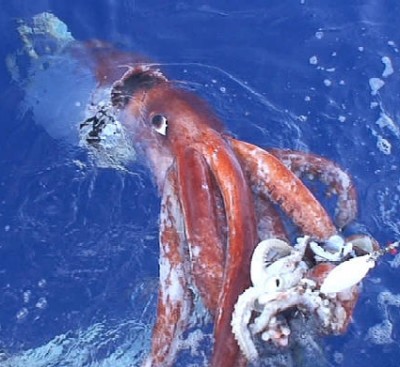
On December 4, 2004, over 160 years after their discovery in the 1840s, the giant squid (Architeuthis) was finally filmed live. The National Science Museum of Japan videotaped a specimen off the Ogasawara Islands, near the remote island of Chichijima, southeast of Tokyo, Japan. More.
Both groups of these Japanese scientists are to be congratulated for their continued successes in pursuing the wonders that we know do exist out there.
2. Lost Worlds Revealed

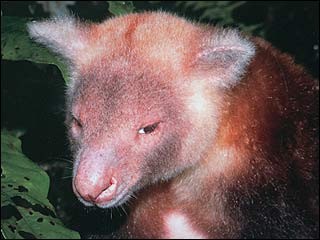
Photographs of two rare but not "new" species, per se – the long-beaked echidna and the golden-mantled tree kangeroo; Conservation International.
"Lost Worlds" are real. New animals are being discovered in them. But is there a chance the media hype is beginning to drown out the reality?
During 2006, the label for an untouched area of new species of animals – a "lost world" – was a bit overused. First the Foya or Foja Mountains, Irian Jaya, also known as Indonesian New Guinea, were said to have given forth "hundreds" of new animals. It turned out to be one new bird species and two rediscoveries, plus more than 20 new species of frogs, four new butterflies, five new species of palm trees and many other plants yet to be classified. Not hundreds and the two mammals said to be discovered there in the last twelve months were found years earlier. Similar things were beginning to be said about the the Laos-Vietnam’s "Lost World."
Nevertheless, at the end of 2006, announcements were made that "Borneo’s Lost World had revealed 52 new species" and the "Yeti Crab" (below) and "Jurassic Shrimp" had been found in the many "lost marine worlds." These are exciting new finds, but perhaps the notion of "lost worlds" is also being skeptically reassessed. Especially, as a new species was found in Europe, hardly a "lost world" (see #3).
Courtesy © Ifremer / A. Fifis Press Release; click on image for larger view.
3. New European Mammal and Others Discovered
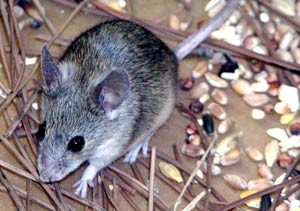
The grey mouse, found in Cyprus by French scientist Thomas Cucchi, was announced in October 2006, to be an entirely new species and, according to the media, overturns the widespread assumption that Europe had no mammals left to be discovered. The species, named Mus cypriacus, or the Cypriot mouse, has a larger head, ears, eyes and teeth than previously known examples. Again, the media said that it is “the first new mammal found in Europe in a 100 years.” Of course, this is poppycock as Darren Naish points out in his blog, for this mouse is the 33rd mammal found in Europe in the last 100 years!
In September 2006, Conservation International biologists found a new species of tree rat in the Amapa region of the Brazilian rainforest, along with other new amphibians, lizards and fish. In May 2006, primate specialists confirmed that a monkey named the kipunji, found in Tanzania in 2005, is the first new primate to be discovered for 83 years in Africa, and indeed, is more than a new species; it is a new genus. Africa’s least-known and probably rarest carnivore was announced in 2006, Jackson’s mongoose, from the Udzungwa Mountains, (according to late December media accounts), a veritable "lost world" of rare and unique wildlife.
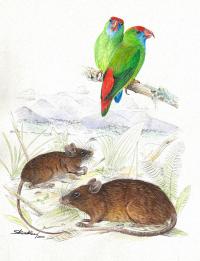
Color illustrations of a new parrot and a new mouse from the Philippines were released in 2006.
A new mouse (Apomys camiguinensis, Philippine forest mouse) and a new parrot (Loriculus camiguinensis, Camiguin hanging-parrot, or Colasisi) were formally announced as newly discovered on the island of Camiguin, in the Philippines, in April 2006, even though they had been collected years earlier. They are what are know as "hidden treasures," in cryptozoology. For example, the parrot is based on previously unstudied specimens in The Field Museum and the Delaware Museum of Natural History collected in the 1960s. The locals have known about the bird for years because it is important in the pet trade.
A further surprise was revealed when it was noted in 2006 that a bizarre rodent that was first spotted in 2005, in a bushmeat market in Laos, has turned out to be a member of a family of mammals that was thought to have become extinct more than 11 million years ago. The kha-nyou, or Laonastes aenigmamus is more like an extinct family of Asian mammals called the Diatomyidae than closed related to any modern rodent.
4. Discoveries Debated: Ivory-billed Woodpecker and Kouprey
Some naturalists have been challenging whether or not the ivory-billed woodpecker has actually been found. The Year 2006 saw a growing debate between those who do not believe there is enough evidence to say the ivory-billed is back and those who are saying sightings are happening nearly weekly – across the southern USA.

Meanwhile, the active search for the Imperial Woodpecker (Campephilus imperialis) – pictured above – the world’s largest species of woodpecker – continues in Mexico.
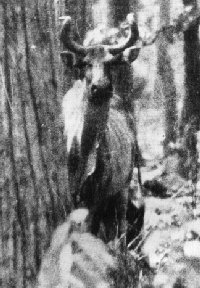
First found in 1937, the kouprey (Bos sauveli), a wild forest-dwelling ox and Asia’s last largest mammal discovered, was declared extinct a few years later, and then was rediscovered in the 1990s. Now, first in a paper released in July 2006, and renewed via press releases in December 2006, three biologists from Northwestern University and the Cambodian Forestry Administration have proposed a taxonomic demotion – the kouprey does not exist they have declared. In a paper published online by The Journal of Zoology, they have written the kouprey is probably a domestic hybrid that became feral, a zoological poseur, not a valid species. But wait a minute, there’s been a debate going on all year, as two French scientists of the National Museum of Natural History in Paris also wrote a paper saying that they have DNA proof the kouprey is a separate species. The kouprey debate continues.
5. Africa Explored: Mokele-mbembe Quest, Gambia Expedition, SEALs Secret Mission
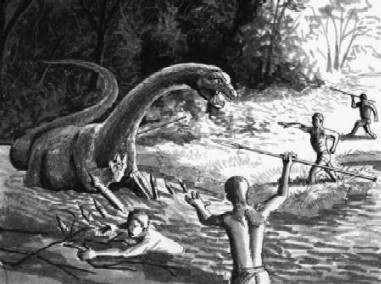
Mokele-mbembe: Bill Rebsamen, used with permission.
In search for Mokele-mbembe, the exploratory Milt Marcy Mokele-mbembe Expedition in January 2006, collected several recent native eyewitnesses. Also it was learned that missionary Paul Ohlin saw a Mokele-mbembe on the Sangha River on January 10, 2006.
Later during the year, the Center for Fortean Zoology’s Gambia Expedition 2006 – a six-person team went to the Gambia, West Africa, in search of a dragon-like creature, known to the locals as Ninki Nanka. The cryptid was said to have killed people as recently as the 1990s. The expedition members also went to dig up part of a beach where an amateur naturalist claims to have buried the carcass of a mysterious fifteen foot sea monster named Gambo, and they sought to find the Armitage’s Skink (Chalcides armitagei) – a tiny lizard first described in 1922 and only rediscovered in 1989.
In the only item on both the top "Bigfoot stories of 2006" list and this list, is the report of a SEAL unit’s videotaping of an unknown cryptid in Africa.

Harry Trumbore’s drawing of Africa’s kalanoro illustrates what became the most viewed single Cryptomundo story of 2006. This was especially true after it was picked up and distributed widely by cryptoinsider David Pescovitz at Boing Boing. In January 2006, it was learned that a covert U.S. Navy SEAL unit involved in operations in the Democratic Republic of the Congo between 1997 and 2002, apparently saw and videotaped some strange creatures. According to the former member’s account, his team observed a group of thirteen "chimpanzee-like" cryptids between 4.5 to 5 feet tall, uniformly gray all over their bodies, with rows of seemingly porcupine-like quills running the length of their backs. The video is still classified. The announcement caused a high-level of interest in the cryptozoology community.
Expeditions by the CryptoSafari group are planned in 2007 and 2008 to track down more on the Kalanoro and Mokele-mbembe accounts.
6. Lake Monsters Photographed: Champ and Nahuelito
Lake monster activity was low-key, with a handful of sightings at Loch Ness, but a couple Lake Monsters may have been photographed during the year. The footage from Vermont was seen as more credible than the pictures dropped by an unknown individual at a newspaper editor’s office in Argentina.
Was this one of the Lake Champlain Monsters, Champ, shown in the videotape finally released on ABC’s "Good Morning America" on February 13, 2006?
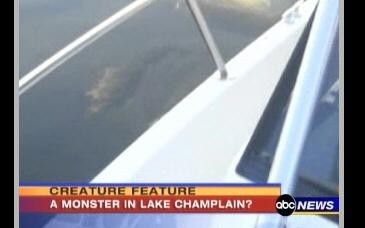

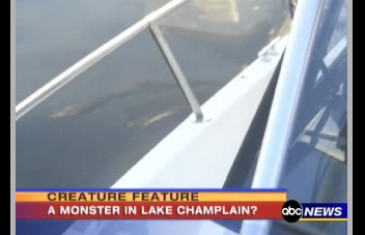
The new photographs (see one below), taken around August 15, 2006, at Lake Nahuel Huap, were published by a local newspaper of the Argentinan Lake Monster, Nahuelito.

7. Canid Capered: Maine Mutant, Montana Creature, and Nebraska Cryptid
Despite the fact it was clear from the beginning the "Maine Mutant" photographed by Michelle O’Donnell in Turner, Maine, in August 2006, was a dog, and DNA samples collected confirmed that, the story was one of the biggest of the summer. It allowed reporters to talk about the real mystery animal that has been killing dogs and livestock in central Maine for a decade, and served the media’s needs to have an actual series of photos of a dead "mystery animal" (before it was positively identified). For more on the Maine Mutant, see here and here.
Other doggy stories included a Montana mystery beast – still unidentified – shot by wildlife officials after it killed 120 head of livestock, and a Nebraska strange doglike creature photographed (see below).
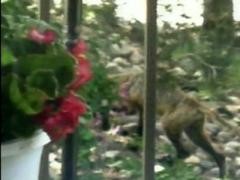
8. Cryptids Televised: Mothman, Monsters, and More
The Real Lost World was the longest cryptozoologically-themed documentary broadcast on television in 2006, in a year that saw many programs follow expeditions in search of cryptids – on National Geographic, Travel, and Sci-Fi channels. "Sci-Fi Investigates" premiered with shows on Mothman, as well as Bigfoot.
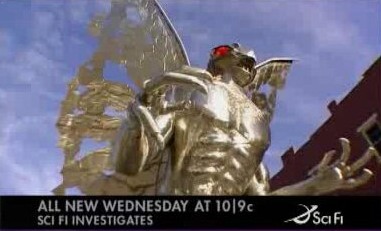
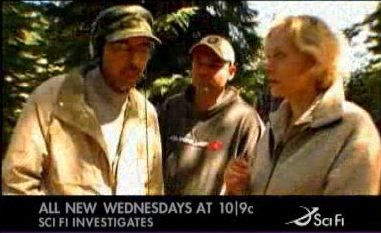
Even the televised ads went cryptozoological, the most notable examples being the Toyota ones starring Adrian Shine, and the "Messin’ With Sasquatch" award-winners. Perhaps even those ads showing a series of "Cavemen-are-still-here" scenarios, from Geico, are cryptozoological too. All of these – Nessie, Sasquatch, and Cavemen – have been very funny, that’s for sure.
9. Thylacine Remembered: Steve Irwin’s Search, New Photo, and National Thylacine Day
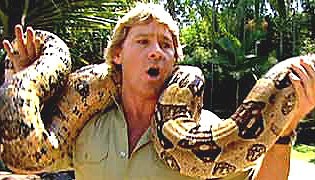
On September 4, 2006, Steve Irwin, 44, the Crocodile Hunter died in a freak accident involving a stringray off the Great Barrier Reef, Australia. The media attention to his death was phenomenal. It was quickly a topic of conversation within cryptozoology circles that Irwin had searched for the Thylacine, in western Australia, as part of his televised series’ quests. For more about Irwin and his link to the hunt for the possibly surviving Thylacines, see here, here, here, and here. Click here for more on the deaths of 25 cryptozoologically-related individuals.
New interest in the hunt for the Thylacine was stimulated by new photographic evidence and more than usual talk of National Thylacine Day, on the 70th anniversary of the species’ (supposed) extinction.
10. Cryptozoology and Art Exhibited: A First

Cryptozoology: Out of Time Place Scale was the world’s first traveling art exhibition that combined world-class artists who shared their creations inspired by cryptozoology and real cryptozoology exhibits of the evidence for cryptids. The exhibition that was held at Bates College in Lewiston, Maine, and the H. & R. Block Artspace in Kansas City, Missouri, lasted from June 24 through December 20, 2006. It opened with a symposium during the fall of 2005, and also produced a book.
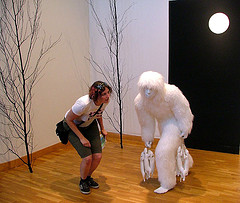
The exhibition contained the art of these exhibitors: Rachel Berwick, Sarina Brewer, Walmor Correa, Mark Dion, Sean Foley, Joan Fontcuberta and Pere Formiguera, Ellen Lesperance, Robert Marbury, Jill Miller, Vik Muniz, Jeanine Oleson, Rosamond Purcell, Alexis Rockman, Marc Swanson, Jeffrey Vallance, Jamie Wyeth and Loren Coleman, curated by Bates’ Mark H. C. Bessire, Kansas City Artspace’s Raechell Smith, and Bates’ Liz Sheehan. Bates’ related that more people attended this cryptozoology exhibition than had attended any other art exhibit held at their Museum of Art.
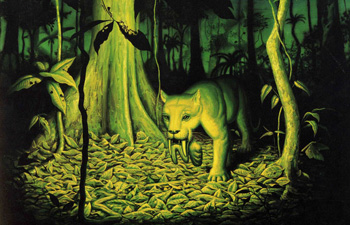
© Loren Coleman 2006
Published December 23, 2006.
^^^^^^^^^^^^^^^^^^^^^^^^^^^
To find the master list of all links to every 2006 lists created at Cryptomundo about the top cryptozoology stories, the top Bigfoot stories, top mystery photographs, best cryptozoology books, best cryptofiction books, top creepy fossil discoveries, gifts, passings, top cryptids, and more, please click here.
About Loren Coleman
Loren Coleman is one of the world’s leading cryptozoologists, some say “the” leading living cryptozoologist. Certainly, he is acknowledged as the current living American researcher and writer who has most popularized cryptozoology in the late 20th and early 21st centuries.
Starting his fieldwork and investigations in 1960, after traveling and trekking extensively in pursuit of cryptozoological mysteries, Coleman began writing to share his experiences in 1969. An honorary member of Ivan T. Sanderson’s Society for the Investigation of the Unexplained in the 1970s, Coleman has been bestowed with similar honorary memberships of the North Idaho College Cryptozoology Club in 1983, and in subsequent years, that of the British Columbia Scientific Cryptozoology Club, CryptoSafari International, and other international organizations. He was also a Life Member and Benefactor of the International Society of Cryptozoology (now-defunct).
Loren Coleman’s daily blog, as a member of the Cryptomundo Team, served as an ongoing avenue of communication for the ever-growing body of cryptozoo news from 2005 through 2013. He returned as an infrequent contributor beginning Halloween week of 2015.
Coleman is the founder in 2003, and current director of the International Cryptozoology Museum in Portland, Maine.

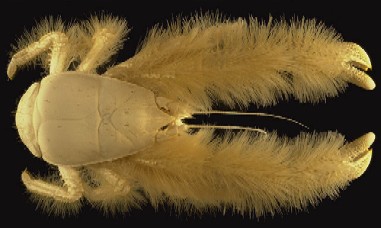
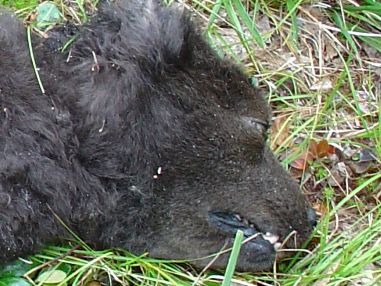
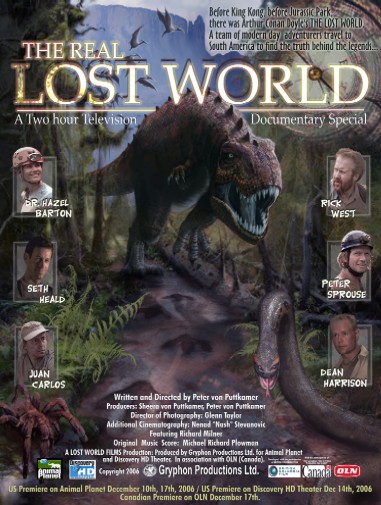









Wow, very interesting wrap up of what was going on in the world of cryptozoology last year. It’s a good refresher for those of us who were here for these breaking stories and great info for anyone new to cryptozoology or this site. Keep up the good work! Let’s hope this is another great year!
I have an update on the Montana mystery canid. DNA testing has been completed and the animal was a wolf – but not a wild wolf. It was a wolf that had been bred in captivity; there were wolf subspecies from all over North America in its genetic makeup, and there would be no way that combination could occur except in a captive breeding.
Here is a link to the story from the Billings, Montana Gazette:
This is a direct quote from the Gazette article:
The animal was not marked nor microchipped so tracing its owner would be pretty much impossible.
My guess is that it either escaped from someone who was afraid to report the escape, for fear of legal action against them due to its depredations, or, more likely, it became too much to handle, or bit someone, and was deliberately released. It can be hard enough for wolves to catch adequate prey, even within a pack, and for a lone wolf released from captivity it would have been even worse. This was a big animal, 106 pounds, and it would have required a lot of food. Being captive-bred it probably did not have good hunting skills, and the domestic livestock was too easy too pass up.
It’s a shame that the animal had to end this way. Not only for the animal itself, but for the stock that was terrorized and killed, and the people who owned the livestock.
Wolves and wolf-hybrids are not dogs. No one should acquire these animals unless they make a lifelong commitment to them – and that includes taking responsibility for the animal’s actions when it escapes.
Nice wrap up Mr. Coleman.
What is that saber-toothed cat in the cryptozoological art exhibit supposed to be? It looks like a Barbourofelis or a Thylacosmilus.
Shout out to Dr. Naish for setting us straight on #3.
Kittenz:
You said:
“Wolves and wolf-hybrids are not dogs. No one should acquire these animals unless they make a lifelong commitment to them – and that includes taking responsibility for the animal’s actions when it escapes.”
While I generally agree with you, I’d like to tell you that I personally knew some people that had a German Shepherd/Wolf mix. HUGE dog–big as a Saint Bernard.
I played with, petted and wrestled with this dog and it was gentle as a lamb. In fact, it was scared of their new baby’s cry and also thunderstorms. They left it out one day while they were gone and a storm came up. The dog TORE the wooden back door off its hinges and tried to crawl under the kid’s bunkbed, turning the whole thing over!
It finally succumbed to complications of a .22 bullet. (They lived way out in the country.) Someone had shot it and it was two days before it even showed any signs of being hurt. While I know old Cadence was probably the exception, he was a wonderful, friendly, loyal animal.
By the way–that white critter–is that what the best dressed crab is wearing this year? 🙂
Rillo777,
I have had wolves and wolf hybrids myself, and have treated and cared for those belonging to other people. My experiences with them have been decidedly mixed.
I have met wolf hybrids that are low-percentage wolf/ high percentage German Shepherd Dog, that are physically indistinguishable from purebred GSDs. Some of these dogs are even used in SAR work. But they are also more than four generations removed from the wolf cross, and the breeder/trainer ruthlessly culls the pups. Any that do not have absolutely stable temperaments are put down.
One of the police officers here used to have a police dog which he claimed was half GSD/half wolf – and the animal looked it. He was a good police dog, which, if he was really half wolf, makes him one in a million. Usually a direct cross is too nervous and shy to be trainable for police work, or any other work.
I suspect that that “half-wolf” police dog may have been half Malamute instead. Many people have dogs that they think are part wolf, when really they are part Malamute or some other northen breed and are “wolf” in appearance only.
My own experience with wolf hybrids was heartbreaking. I mentioned it in the original thread about the Montana mystery canid so I won’t go into it again here.
I will add that one of the best dogs I ever had was a coydog. He was part smooth collie and part coyote, and he was one of the smartest canines I ever had the fortune to know – and I have met literally thousands of dogs. He graced my life for nearly nine years. His intelligence was amazing. But even at that, I had to really keep an eye on him because he was prone to predatory behavior toward small animals, and even toward young children if they were running and making noise. He was fine with my own boys, who were teenagers, but I did not trust him around small children. He never bit anyone, but I believe that was because I never gave him an opportunity.
I love dogs. All dogs. Especially GSDs and other big “wolfy” types. Before I raised that litter of wolf hybrids, I did not really understand why so many people were against them. Those that I had cared for routinely, vaccinated, etc., were not vicious, although most of them were almost pathologically shy. One big 150-lb wolf/Mal hybrid was so terrified of tile floors that he refused to walk on them; one of the kennel attendants had to put him on a blanket and pull him back to an exam room on it. But he was not a mean animal.
Then I took a litter of wolf hybrids to raise, because the owner said he was going to shoot the mother drown the pups- and after that experience I understand why there are so many people lobbying against the unregulated ownership of wolves and wolf hybrids. Wolf hybrids are not dogs. Nor are they wolves. They are … something else. They are unpredictable, and unstable, and for every one that is trustworthy, there are thousands that are not. Especially around children. Even when they are not overtly vicious, they are dangerous, because you never know what will trigger an attack. I am not saying that they are all “bad”, but I do believe they are all dangerous, and the same strict regulations that apply (or should apply) to big cats and other wild animals in captivity should apply to them.
The Montana mystery animal was not even a hybrid; it was a pure wolf, and look at the damage it caused. People acquire animals like this thinking they will have a status symbol, or a piece of the wild, or something. They pay a small fortune for the animal, and then when it bites someone, or becomes hard to handle, they “free” it in a wilderness area rather than having it put down. Or else it escapes and they don’t want to risk possible fines and lawsuits so they keep quiet about the escape.
Owning a wolf hybrid is a big responsibility. Under no circumstances should they ever be “freed” into the wild. If for whatever reason someone decides not to keep one, and a sanctuary or safe home cannot be found for it, it should be put down. If people are not willing to face that up front, they have no business owning one. Some of them are great pets. Most are not. But they all are living creatures, and unless a potential owner is willing to make a lifetime commitment to them, they should not own one.
Thanks to kittenz and others for any updates on these stories, one of the many things I like about our community!
Thank you kittenz-you obviously know well what you’re talking about. That was a lot of food for thought and I appreciate the insight!
Great list. I would say this the real lost worlds are yet to be discovered, most likely on other earth like planets in our universe. In the next 100 years, Astrobiology will be in the forefront of exciting findings. It’s quite possible that life forms on other planets will exhibit the same ages that occurred on our planet. We can’t travel back in time, but it could very well appear on some distant planet that Dinosaurs and Mammoths will roam.
Kudos to Loren and company for superb work in putting this out every year.
It did jog my memory on one thing- the Navy SEAL story. Do we have any evidence this is anything more than a tall tale by one man? If not, why does anyone still talk about it?